Organic foods are growing in popularity, but to a majority of consumers the benefits of these foods are unclear. The general belief seems to be that the only difference between organic and conventional foods is the significant price discrepancy, but the reality is that shoppers who dismiss organic options need to do some extensive label checking. Harmful food additives are lurking in the vast majority of supermarket products. Given the prevalence of these additives in our food supply, it would be virtually impossible to completely avoid them, but limiting their intake as much as possible is a big step toward better health.
10. High-Fructose Corn Syrup
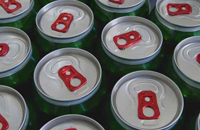 High-fructose corn syrup has earned a bad reputation with many health-conscious eaters, but overall consumption of this sugar alternative has not diminished, as consumers continue buying soft drinks, sweetened drinks, breakfast cereals and other products with the ingredient. HFCS has been targeted for its role in causing obesity, but there are other concerns as well. A 2008 study published in the journal Environmental Health found almost half of the HFCS samples tested contained trace amounts of mercury, a toxic metal that has been linked to learning disabilities and heart disease. HFCS industry executives disputed the findings.
High-fructose corn syrup has earned a bad reputation with many health-conscious eaters, but overall consumption of this sugar alternative has not diminished, as consumers continue buying soft drinks, sweetened drinks, breakfast cereals and other products with the ingredient. HFCS has been targeted for its role in causing obesity, but there are other concerns as well. A 2008 study published in the journal Environmental Health found almost half of the HFCS samples tested contained trace amounts of mercury, a toxic metal that has been linked to learning disabilities and heart disease. HFCS industry executives disputed the findings.
Despite the bad press, many still think the word “corn” somehow means this ingredient is safe to consume. That’s far from the case. The corn used in high-fructose corn syrup is usually genetically modified and loaded with pesticides. In fact, the corn is genetically modified so that it can absorb massive quantities of pesticides without dying, thus diminishing crop loss to pests, thereby increasing profits.
9. BHA and BHT
 Butylated hydroxyanisole (BHA) and butylated hydroxytoluene (BHT) are synthetic antioxidants often used to preserve meat products. A study conducted by the University of Hamburg concluded that in high doses, BHA can give animals stomach tumors, and excessive BHT can give animals liver tumors. Animal studies also showed that these compounds inhibit blood clotting. The study concluded that the use of such products in food and drugs is “probably harmless.” For many health-conscious consumers, however, the phrase “probably harmless” is not very reassuring.
Butylated hydroxyanisole (BHA) and butylated hydroxytoluene (BHT) are synthetic antioxidants often used to preserve meat products. A study conducted by the University of Hamburg concluded that in high doses, BHA can give animals stomach tumors, and excessive BHT can give animals liver tumors. Animal studies also showed that these compounds inhibit blood clotting. The study concluded that the use of such products in food and drugs is “probably harmless.” For many health-conscious consumers, however, the phrase “probably harmless” is not very reassuring.
8. Potassium Bromate
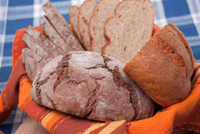 This ingredient is often used in breads and flour products to promote rising. Although potassium bromate usually dissipates during the baking process, this is not always the case. Any residual traces of this substance are unsafe. The International Agency for Research on Cancer suspects that potassium bromate may be a human carcinogen, and it has been banned in many countries, including throughout much of Europe.
This ingredient is often used in breads and flour products to promote rising. Although potassium bromate usually dissipates during the baking process, this is not always the case. Any residual traces of this substance are unsafe. The International Agency for Research on Cancer suspects that potassium bromate may be a human carcinogen, and it has been banned in many countries, including throughout much of Europe.
7. Hydrogenated and Partially Hydrogenated Oils
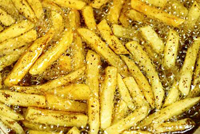 Hydrogenated oils, commonly known as trans fats, are artificial fats created by infusing liquid oils with hydrogen bubbles, enabling the fat to remain solid at room temperature, and thus making it ideal for processed foods meant to have a long shelf life. This provides convenience for grocers and food companies, but it may also mean larger medical bills for consumers of these products. The Mayo Clinic has linked trans-fat consumption to an increased risk for heart disease, due to the fact that hydrogenated products tend to raise bad cholesterol and lower good cholesterol. Trans fats are commonly found in fast food French fries and other fried foods, margarine, breakfast cereals and snack foods such as cookies, crackers and potato chips.
Hydrogenated oils, commonly known as trans fats, are artificial fats created by infusing liquid oils with hydrogen bubbles, enabling the fat to remain solid at room temperature, and thus making it ideal for processed foods meant to have a long shelf life. This provides convenience for grocers and food companies, but it may also mean larger medical bills for consumers of these products. The Mayo Clinic has linked trans-fat consumption to an increased risk for heart disease, due to the fact that hydrogenated products tend to raise bad cholesterol and lower good cholesterol. Trans fats are commonly found in fast food French fries and other fried foods, margarine, breakfast cereals and snack foods such as cookies, crackers and potato chips.
6. Sodium Nitrate
 Processed meats such as hot dogs, sausage, bacon and deli meat contain the chemical curing agent sodium nitrate. A University of Hawaii study that included more than 200,000 participants found processed meats raise the risk for pancreatic cancer by a whopping 67 percent. Natural News Editor Mike Adams says this carcinogenic effect is a direct result of sodium nitrate.
Processed meats such as hot dogs, sausage, bacon and deli meat contain the chemical curing agent sodium nitrate. A University of Hawaii study that included more than 200,000 participants found processed meats raise the risk for pancreatic cancer by a whopping 67 percent. Natural News Editor Mike Adams says this carcinogenic effect is a direct result of sodium nitrate.
The U.S. Department of Agriculture attempted to ban the use of sodium nitrate in the 1970s, but was met with heavy resistance from the meat industry, which uses the chemical to give certain meats a more appetizing color.
5. Artificial Sweeteners
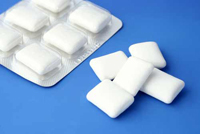 Artificial sweeteners such as aspartame and sucralose are added to foods and drinks as a replacement for sugar. Foods containing these sweeteners are often billed as healthy dietary choices for those trying to limit sugar intake, and artificial sweeteners have been praised in some circles for helping diabetics and people on weight-loss programs. However, there is conflicting evidence concerning the safety of these products. A 1998 Massachusetts Institute of Technology study found that the artificial sweetener aspartame had no adverse health effects, even when taken in large daily doses. But a 2008 Duke University study found that aspartame suppressed beneficial bacteria in the body and inhibited the effectiveness of orally administered drugs.
Artificial sweeteners such as aspartame and sucralose are added to foods and drinks as a replacement for sugar. Foods containing these sweeteners are often billed as healthy dietary choices for those trying to limit sugar intake, and artificial sweeteners have been praised in some circles for helping diabetics and people on weight-loss programs. However, there is conflicting evidence concerning the safety of these products. A 1998 Massachusetts Institute of Technology study found that the artificial sweetener aspartame had no adverse health effects, even when taken in large daily doses. But a 2008 Duke University study found that aspartame suppressed beneficial bacteria in the body and inhibited the effectiveness of orally administered drugs.
4. Soy
The reputation enjoyed by soy as a health product makes it one of the most dangerous items on this list. While it is true that the fermented soy commonly consumed in Asian cultures does offer health benefits, the soy found in processed foods is a far cry from tofu. The soybeans in this country are often genetically modified, covered in pesticides and altered in ways that negate any beneficial effects.
According to the Cornucopia Institute, a non-profit agricultural organization, any non-organic food that contains soy protein concentrate or isolate will likely contain small amounts of hexane, a petroleum byproduct and known neurotoxin. When soy is manufactured, hexane is used to separate the proteins and oils.
3. Inorganic Phosphates
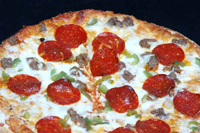 The vast majority of processed foods contain inorganic phosphates, which are added to these foods in order to improve texture and promote water retention. Although the human body needs phosphate, the rampant use of inorganic phosphates has serious consequences. A Seoul University study published in 2011 in the American Journal of Respiratory and Critical Care Medicine, concluded inorganic phosphate consumption increases lung cancer growth in mice.
The vast majority of processed foods contain inorganic phosphates, which are added to these foods in order to improve texture and promote water retention. Although the human body needs phosphate, the rampant use of inorganic phosphates has serious consequences. A Seoul University study published in 2011 in the American Journal of Respiratory and Critical Care Medicine, concluded inorganic phosphate consumption increases lung cancer growth in mice.
2. Monosodium Glutamate
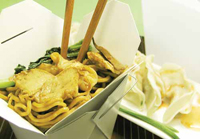 The food additive monosodium glutamate, a commonly used flavor enhancer, first made its way into the U.S. food supply in the 1940s when American soldiers fighting in World War II noticed that their Japanese counterparts had more palatable rations. The ingredient has since become prevalent in many canned and processed foods. The extra flavor, however, comes with a steep price.
The food additive monosodium glutamate, a commonly used flavor enhancer, first made its way into the U.S. food supply in the 1940s when American soldiers fighting in World War II noticed that their Japanese counterparts had more palatable rations. The ingredient has since become prevalent in many canned and processed foods. The extra flavor, however, comes with a steep price.
Dr. Russell Blaylock, a neurosurgeon and author of the book Excitotoxins, states that MSG can cause obesity, emotional problems, endocrine disruption and an aversion to healthy foods. Avoiding MSG is important but it is not always easy, as current regulations permit manufacturers to label this chemical with an array of monikers: natural flavor, hydrolyzed vegetable protein, autolyzed yeast and soy protein isolate. Chinese restaurants have been particularly targeted for using MSG, although many such restaurants have abandoned use of the additive.
1. Artificial Flavors
 The ambiguity and mystery of the artificial flavors classification makes it the most dangerous item on this list. The truth is that nobody really knows what the term “artificial flavors” means because a host of additives are given this generalized title on food labels. A 2005 New York Times article, however, shed some light on just how scary this lack of specificity should be to consumers. The Times reported that several major food and beverage companies were working closely with a biotech company that produces chemicals that intensify the taste of food by altering taste receptors.
The ambiguity and mystery of the artificial flavors classification makes it the most dangerous item on this list. The truth is that nobody really knows what the term “artificial flavors” means because a host of additives are given this generalized title on food labels. A 2005 New York Times article, however, shed some light on just how scary this lack of specificity should be to consumers. The Times reported that several major food and beverage companies were working closely with a biotech company that produces chemicals that intensify the taste of food by altering taste receptors.
Now, companies can lower the sugar or sodium content in a given product and advertise that fact, but make up for any loss in taste by adding the biotech company’s secret chemical concoctions. And the reason these chemicals are allowed to remain nameless is because of the all-encompassing artificial flavors category. Buyer beware.
Dangerous food additives to avoid:
Because my health and health of my family matters, throughout years I’ve looked into several publications and research that have been done regarding food additives, preservatives, artificial sweeteners and colors, and put together table that can be a simple guide to those who prefer to be cautious and who like to have a choice, to decide what to consume. Some of use might be more sensitive to chemicals then others.
Here is a new printable list with identifying code numbers of the nasty food additives that we should avoid eating. Artificial food preservatives, food colors and flavour enhancers, many of these can be dangerous chemicals added to our food and are known to be linked to Hyperactivity, Attention-Deficit Disorder (ADD), Asthma, Cancer and other medical conditions.
Where to look for food additives on a product label?
When buying groceries, these additives are listed (if it’s given by the law) on the food product’s packaging under “INGREDIENTS:” or “CONTAINS:” section, usually next to “Nutrition Information” but the code numbers or names of these additives can be printed on in a small font.
In my opinion placement of the text can be somewhat hidden or even misleading. Any dangerous additives added in the food, if the product contains any, really should be listed visibly and labeled on the pack for instance as “Nasty Additives“.
330 and E330 Citric Acid
How about the Citric Acid E330 or 330? No problem with naturally occurring citric acid. Artificially produced E330 or 330 additive, depending on where or how it is produced with using sulfuric acid, many believe the product might still contain mold and sulfur/sulfites not filtered out completely during the production (Sulfur dioxide and other sulfites (also referred to as sulphites) are among food additives in the list below, under H – A, causing asthmatic and allergic reactions.) For most people sulfites are safe, but for example sensitive aspirin allergies or asthma sufferers can react very severely to sulfites.
In the year 1953 Sir Hans Krebs received Nobel Prize for physiology medicine for discovering that the Citric acid in metabolic reactions acts as part in series of compounds occurring within physiological oxidation of proteins, carbohydrates and fats and turning them into water and Carbon dioxide. Called Tricarboxylic Acid Cycle or known as the Krebs Cycle which is involved in most metabolic reactions, where the Citric acid plays a major role.
* The world “krebs” translates to English word “cancer” … and that’s what created the misunderstanding that citric acid 330 – e330 causes cancer. But in fact it does not. However, it could melt your teeth if you kept it in your mouth for long or if you consumed soft drinks a lot. It is organic acid used as additive in foods, in soft drinks, in beer, wine or cheese production, citric acid prevents bacteria growth, it gives the citric/sour flavour, bakers use it, citric acid E330 or 330 is often added to cakes, biscuits, soups, all sorts of sauces, frozen packed and canned food products, sweets, marmalade’s, ice creams … you can find it mentioned on the packaging.
View the Codes and names of dangerous food additives here: http://www.traditionaloven.com/articles/122/dangerous-food-additives-to-avoid
